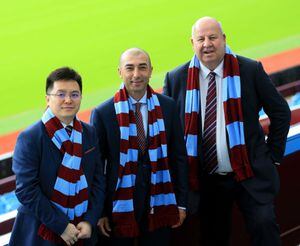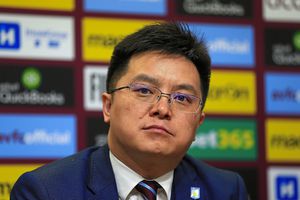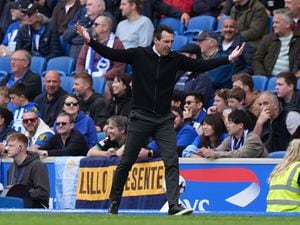Dr Tony Xia: A year in charge of Aston Villa
From the moment they first became aware of his existence, Tony Xia has rarely failed to tell Villa supporters what they want to hear.
No sooner had he emerged as the figure behind a £76.2million buy-out of Randy Lerner then the Beijing businessman was promising to put Villa, newly relegated from the Premier League, among the European elite within the space of five years.
The following 12 months has seen Xia continually reaffirm that aim, while taking on both his and the club’s detractors on social media even though, in real terms, Villa have made precious little progress toward his ultimate goal.
Hope remains far from extinguished, along with faith in the owner from the vast majority of supporters. There can be no question, however, that a 13th placed finish in the Championship fell well below expectations.
There is a strong argument to be made that the first big decision of Xia’s reign was also his biggest mistake. The error of appointing Roberto Di Matteo as manager is not without mitigation and was one which was quickly recognised, with the Italian removed after barely four months in charge. Yet the ripples from his brief reign are still being felt.
What Steve Bruce would give for the kind of transfer kitty his predecessor was handed last summer. Villa splashed out more than £50million on new players, recouping less than a quarter and while it would be wrong to brand last summer’s transfer window as a complete disaster, it contained some expensive misses.
The £12million signing of Ross McCormack might have been the most high-profile but at least Villa’s logic in buying a player with such an impressive record in the second tier was clear.

Far stranger, in hindsight, was the decision to splash out a combined £10million on two unproven players; Pierluigi Gollini and Aaron Tshibola. Both may over time develop into fine players but were always likely to struggle in a team where the only aim was promotion.
Having erred in appointing Di Matteo, Villa took a much more collective approach in choosing Bruce as his successor. To Xia’s credit, he has never sought to disguise the fact the Italian was very much his appointment, made at a time when the building blocks of his takeover were still falling into place and when the club was in desperate need of a manager.
A few months on, he was able to lean on an improved infrastructure, with chief executive Keith Wyness and technical director Steve Round leading a methodical search.
Round’s appointment is regarded inside Villa Park as being the most significant of Xia’s first year and the rebuilding the club’s off-field mechanics, which had been left to wither under Lerner, represents perhaps the owner’s most successful move to date, even if we are yet to see the fruits of the labour.
A scouting department, which had come to be regarded as a laughing stock, is being steadily rebuilt and the brain drain of football knowledge at all levels of the club addressed.
These are all small steps when compared to the bigger picture, yet no less essential if the club is to finally start moving in the right direction. Critics will naturally point to the money that has been spent and the lack of return. It is difficult to view a net spend of £50million on signings and a mid-table Championship finish as anything less than embarrassing.
On the other hand, there is also an argument to be made that such a cash injection was needed, merely to halt the fall which saw Villa plummet out of the Premier League with a club record low points haul.
Of that team, there is perhaps only Alan Hutton who could claim he regularly stood up and was counted in the Championship.

Such a large overhaul of the playing staff created its own problems and there were times in the campaign, particularly during January and February, when it was genuinely destabilising.
The hope must be that, now mostly complete, it has left Villa with a stronger platform on which to build. Anecdotally, at least, they appear to have a far happier dressing room.
For a man with such a vocal presence on social media, meanwhile, Xia retains an air of mystery. His personal wealth remains unverified, while the manner of his spending – and its source – will probably not begin to come clear until the next set of club accounts are released next year.
Xia, it is claimed, has become more of a chairman and less of a fan. Certainly his post-match Twitter analysis is more diplomatic than the near outbursts of the season’s early weeks, which prompted one journalist to ponder whether Di Matteo would become the first manager to be sacked by emoji.
The owner would likely argue his fortune and commitment has been proven in the money spent, yet Villa remain the most glaring example in the game that it is not what you spend but how you spend it that counts.
Xia will hope some shrewd if as yet unheralded decisions in an often bruising first year have laid the foundations for future success.
From now on, words alone will not suffice.





